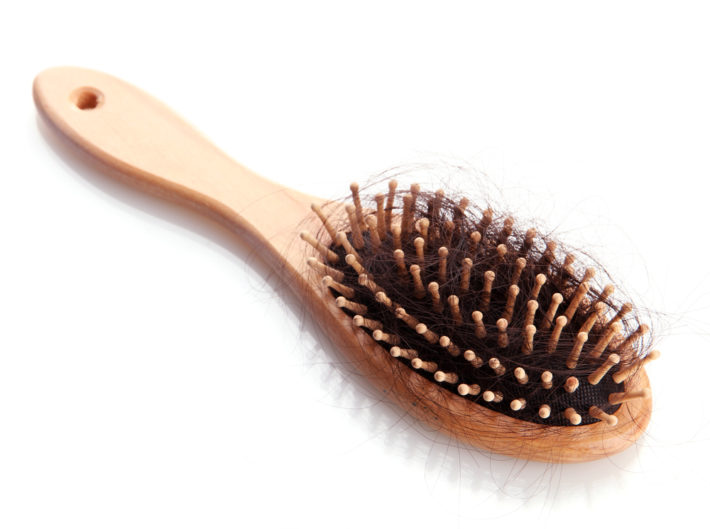
The Problem
Does your hairbrush ever look like a bone from a wooly mastodon?
We hear a lot about hot flashes around menopause.
But another menopause symptom affects about two-thirds of midlife women: hair thinning and hair loss.
Combs and brushes full of hair. Circles of hair around the bathtub drain.
For most, the reason isn’t exactly clear, although hormones a person’s genes likely play a role.
At the Annual Meeting of the North American Menopause Society (NAMS), several new therapies and treatment approaches to stimulate hair growth and minimize thinning were discussed.
What is Happening?
There are two basic types of hair loss. One is non-scarring. It that situation, the hair follicle is still intact and the hair can possibly grow back.
The other is scarring in which the hair follicles cannot grow hair back because they were destroyed.
The most common types of hair loss in women is female pattern hair loss, also known as androgenic alopecia. But in contrast to men where the hairline moves back, in women the hair gets thinner. That is because the hair’s phase of growth is shortened and there are many fewer hairs actively growing. To make matters worse, hair follicles shrink, which makes each individual hair thinner so more scalp can be seen but the hairline is unchanged. When that happens and the hair is parted, the part-line can look like a Christmas tree that becomes noticeable.
Who Is Likely To Get It?
- Women over 40.
- Women postpartum.
- Women who have had chemotherapy or other medications that can cause hair loss or thinning.
- Women whose hairstyles pull the hair back tightly like tight ponytails or braids
- Women who use harsh chemicals on their hair.
- Women who have low thyroid
- Vitamin deficiency
- Extreme stress
- Menopausal women.
What Can Be Done?
Here are some of the treatments discussed:
- Topical 5% minoxidil taken daily for at least three months before noticeable results.
- Finasteride – a 5-alpha-reductase inhibitor that is FDA-approved for male hair loss. Using it for women is an off-label indication, since it isn’t approved for women, but it may be effective in females. Often higher doses are needed.
- Drospirenone is a progesterone-type of medication found in some birth control pills. sometimes it is combined with a week diuretic called spironolactone that happens to block the male-type androgen hormones from attaching to androgen receptors, which prevents the hairs from being affected. This combo can cause blood levels of potassium to increase so that has to be monitored for safety.
- Platelet-rich plasma injections. These are injected into the scalp and have been shown to be effective in some women.
Dr. Allison Bruce of May Clinic who presented this information said, “Since some medical conditions can result in permanent hair loss and be signs of more serious illnesses or dermatologic disease, early diagnosis is important. In some cases, biopsies may be needed for an accurate diagnosis,”
Dr. Stephanie Faubion, who is the medical director of NAMS commented that “Hair loss and thinning is a concern of many midlife women. Presentations that address this important topic are especially valuable and timely for healthcare professionals so they are prepared to discuss the issue with their patients.”
For more information about midlife women’s health issues, menopause and healthy aging, visit menopause.org.
You can also find much more information about menopause at DrMache.com/blog.
Interested in getting help? Visit MenopauseCoaching.com.
